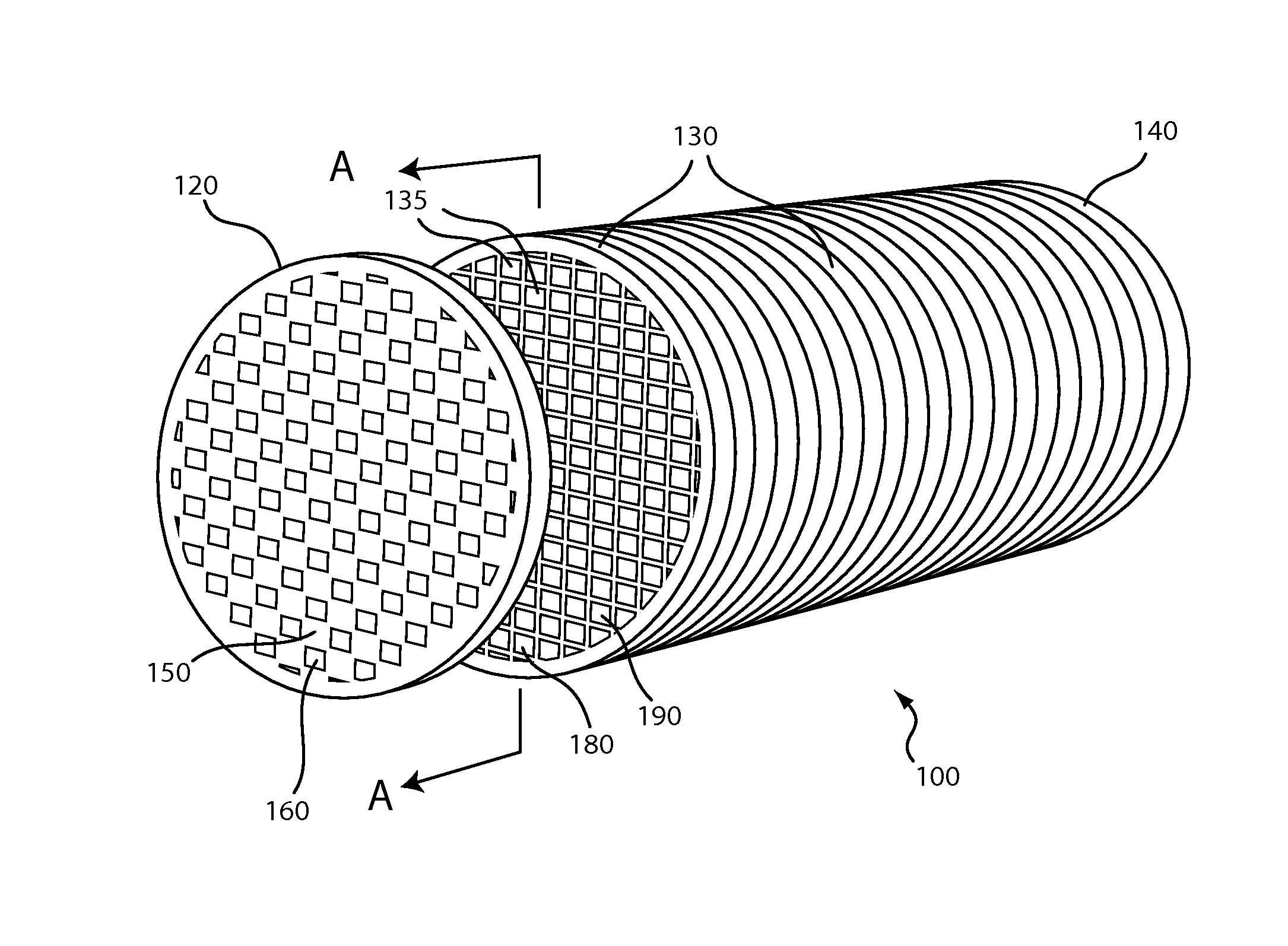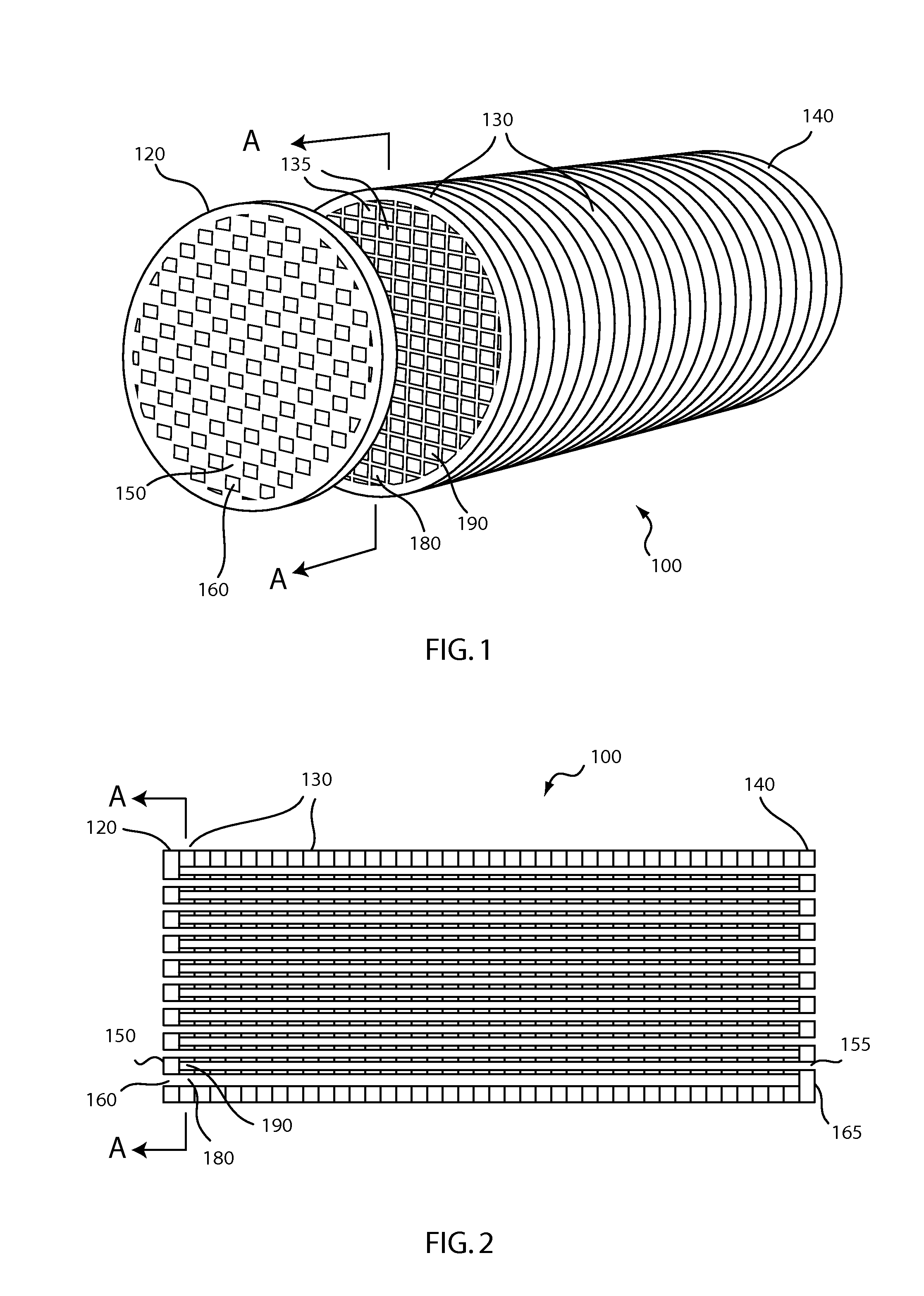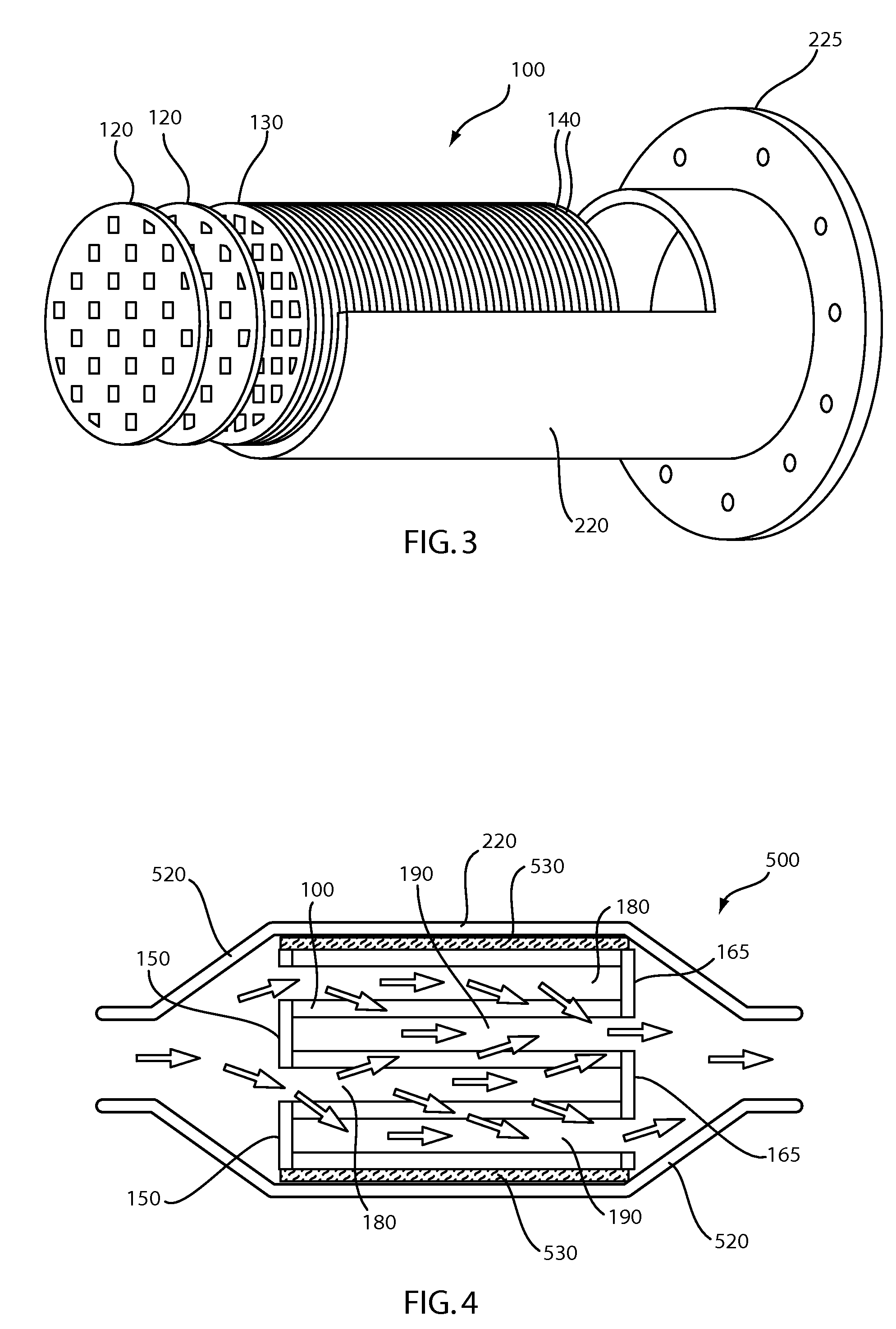Honeycomb Structural Body and Method of Fabricating the Same
- Summary
- Abstract
- Description
- Claims
- Application Information
AI Technical Summary
Benefits of technology
Problems solved by technology
Method used
Image
Examples
first embodiment
[0028]In a first embodiment, the in-situ silicon carbide lamination member 130 can be fabricated by the method shown in FIG. 6. Carbon fiber 310 (carbonaceous type fiber) is mixed with silicon additives 320 and a fluid 330 into a slurry at step 340. The carbon fiber 310 can be polyacrilnitrizile (PAN) fibers or petroleum pitch fibers, of the type commonly used in carbon-fiber reinforced composites, or a variety of carbonized organic fibers such as polymeric fibers, rayon, cotton, wood or paper fibers, or polymeric resin filaments. The carbon fiber diameter can be 1 to 30 microns in diameter, though for intended applications such as exhaust filtration, a preferred range of fiber diameter is 3 to 10 microns can be used. The fiber diameter and length is not materially changed in the subsequent formation of silicon carbide, and thus, the selection of the carbon fiber characteristics should generally match the desired fiber structure of the final product. PAN or Pitch fibers, and carboni...
second embodiment
[0043]the present invention is depicted in reference to FIG. 7. In this embodiment, carbon fiber 310 (carbonaceous type fiber) is mixed with a fluid 330 into a slurry at step 340. The carbon fiber 310 can be polyacrilnitrizile (PAN) fibers or petroleum pitch fibers, of the type commonly used in carbon-fiber reinforced composites, or a variety of carbonized organic fibers such as polymeric fibers, rayon, cotton, wood or paper fibers, or polymeric resin filaments. The carbon fiber diameter can be 1 to 30 microns in diameter, though for intended applications such as exhaust filtration, a preferred range of fiber diameter is 3 to 10 microns can be used. The fiber diameter and length is not materially changed in the subsequent formation of silicon carbide, and thus, the selection of the carbon fiber characteristics should generally match the desired fiber structure of the final product. PAN or Pitch fibers, and carbonized synthetic fibers, such as rayon or resin, will have more consisten...
PUM
| Property | Measurement | Unit |
|---|---|---|
| Length | aaaaa | aaaaa |
| Structure | aaaaa | aaaaa |
Abstract
Description
Claims
Application Information
 Login to view more
Login to view more - R&D Engineer
- R&D Manager
- IP Professional
- Industry Leading Data Capabilities
- Powerful AI technology
- Patent DNA Extraction
Browse by: Latest US Patents, China's latest patents, Technical Efficacy Thesaurus, Application Domain, Technology Topic.
© 2024 PatSnap. All rights reserved.Legal|Privacy policy|Modern Slavery Act Transparency Statement|Sitemap



